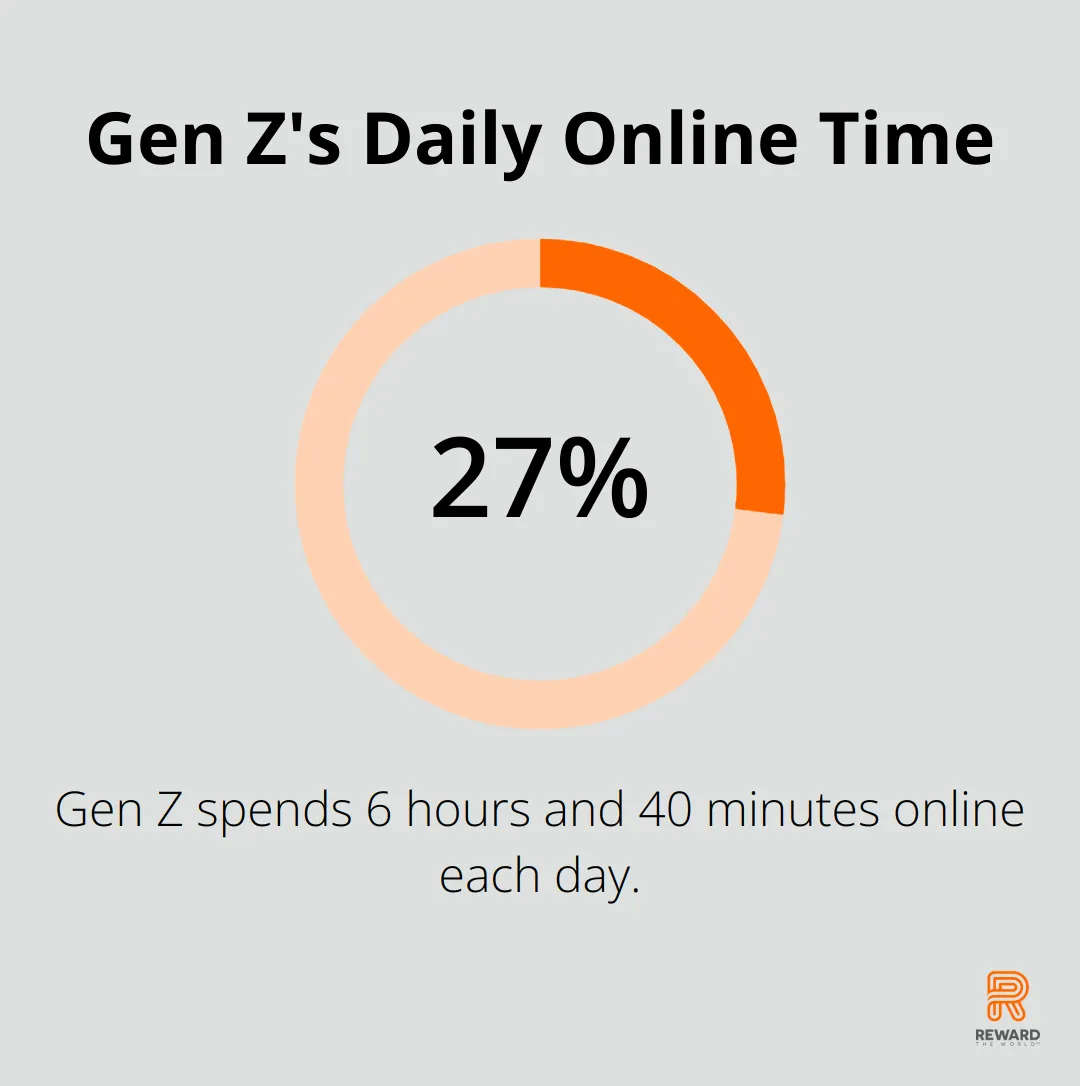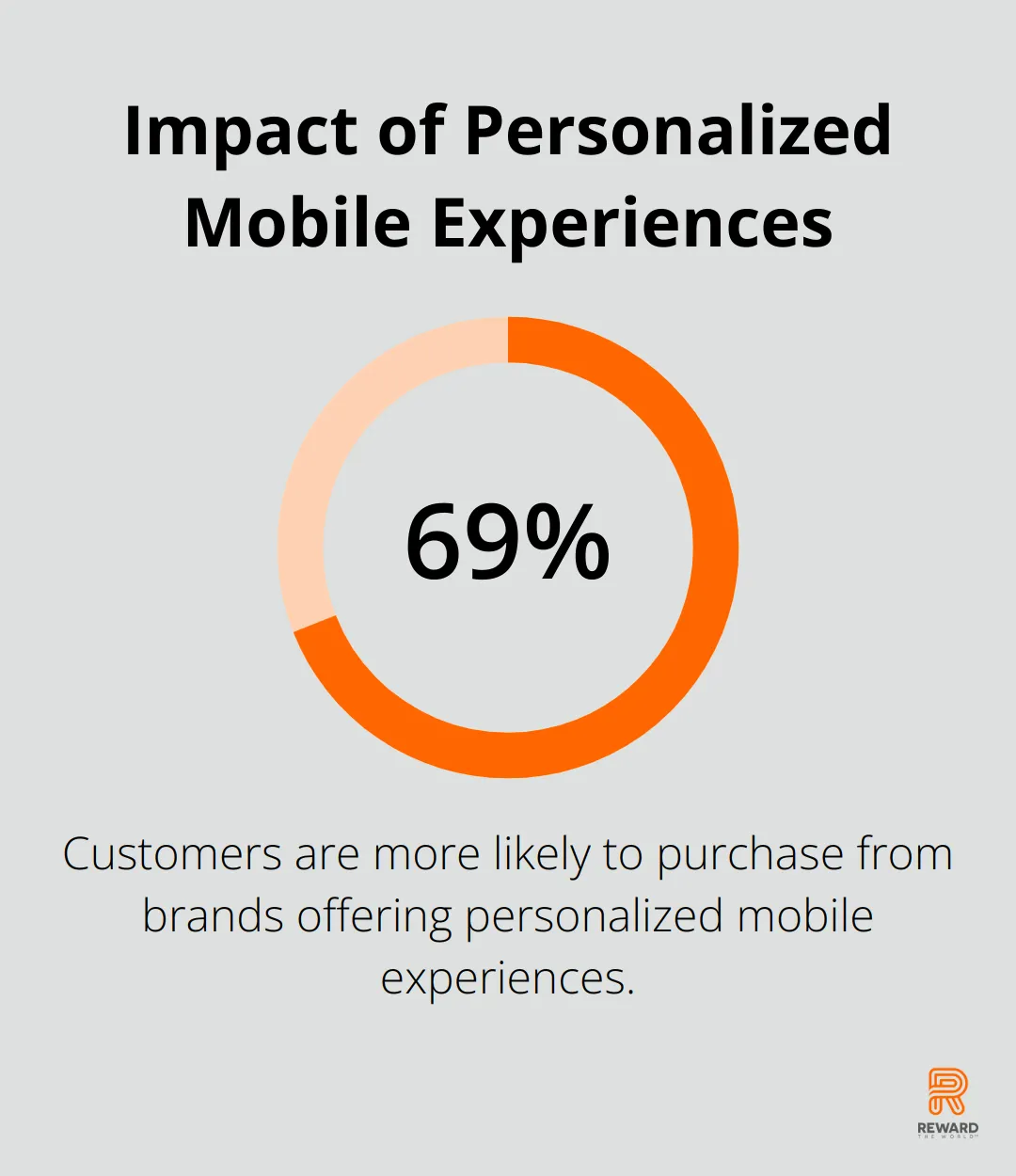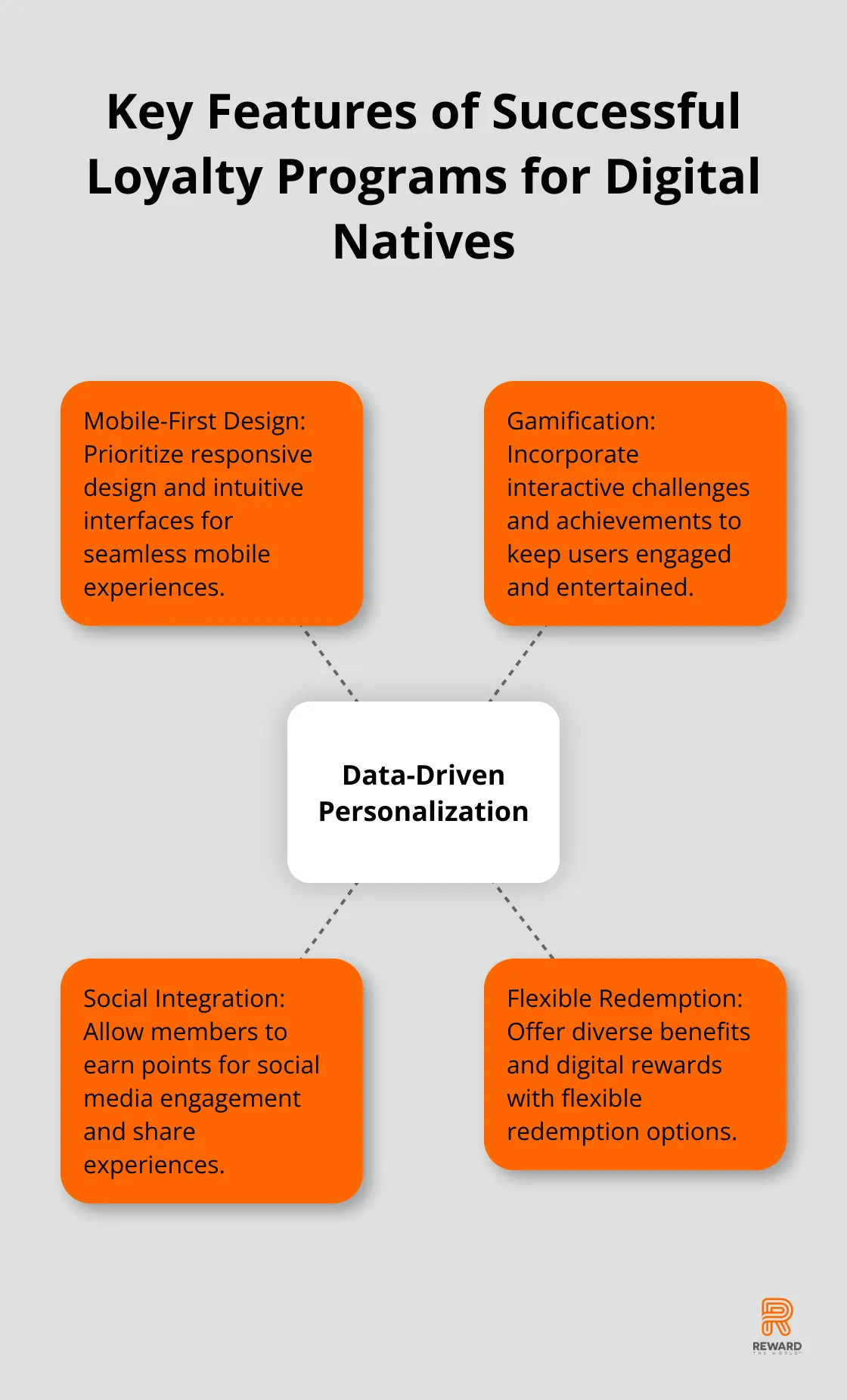
Digital natives are reshaping the landscape of customer loyalty. Born into a world of smartphones and social media, this tech-savvy generation demands more from brands than ever before.
At Reward the World, we’ve seen firsthand how Gen Z engagement is transforming loyalty programs. Their expectations go beyond simple point accumulation, focusing on seamless digital experiences and personalized rewards.
This blog post explores what digital natives truly want from loyalty programs and how brands can adapt to meet their unique needs.
Who Are Digital Natives?
Tech-Savvy Consumers
Digital natives are people who have grown up in the information age. The term “digital native” was coined by Marc Prensky. Born after 1995, they’ve never experienced a world without the internet, smartphones, and social media. This constant exposure to technology has shaped their behaviors, expectations, and brand interactions.
These individuals navigate multiple devices and platforms with ease, often simultaneously. Gen Z spends about 6 hours and 40 minutes online each day. This constant connectivity translates into an expectation for brands to be equally accessible and responsive across all digital channels.

Personalization Seekers
Personalization isn’t just a preference for digital natives – it’s an expectation. AI and personalization are transforming consumer experiences, boosting engagement, satisfaction, and loyalty in the digital age. This trend underscores the importance of tailored experiences in modern loyalty programs.
Instant Gratification Demanders
The on-demand culture has molded digital natives’ expectations for speed and convenience. They want instant access to information, products, and services. This desire for immediacy extends to loyalty programs, where instant rewards often trump long-term point accumulation.
Social Media Influencers
For digital natives, social media isn’t just a pastime – it’s an integral part of their lives. They use platforms like Instagram, TikTok, and Twitter not just for communication, but for shopping, brand discovery, and decision-making. This shift carries major implications for how brands should approach marketing and loyalty programs.
Value-Driven Shoppers
Despite their digital nature, digital natives show surprising pragmatism when it comes to brand loyalty. They don’t fall easily for flashy marketing – instead, they seek real value. This data highlights the need for loyalty programs to offer tangible benefits and a smooth user experience to capture their attention.
Digital natives’ unique characteristics continue to reshape consumer behavior and expectations. As we move forward, we’ll explore how these traits translate into specific expectations for loyalty programs, and how brands can adapt to meet the needs of this influential demographic.
What Do Digital Natives Expect from Loyalty Programs?
Digital natives reshape the loyalty landscape with their unique preferences and behaviors. Their demands from loyalty programs have shifted significantly. Let’s explore the key expectations that drive this change.
Frictionless Digital Experiences
Digital natives expect personalized mobile experiences, and they reward brands that provide them. 69% of customers say they are more likely to purchase from a brand that offers such experiences. Brands must prioritize mobile-first design and ensure their loyalty platforms work flawlessly across all devices. A user-friendly interface accessible in multiple languages (like the one offered by Reward the World) caters to a global audience and meets this demand for seamless experiences.

Hyper-Personalized Rewards
Generic rewards fail to impress digital natives. They expect brands to use data and AI to offer personalized incentives that align with their individual preferences and behaviors. A recent study analyzed the impact of loyalty card programs on customer behavior in the Albanian market, highlighting the importance of personalized approaches in loyalty programs.
Successful loyalty programs use predictive analytics to anticipate customer needs and offer tailored rewards at the right moment. This level of personalization increases engagement and fosters a deeper emotional connection between the brand and the consumer.
Real-Time Engagement and Instant Gratification
The on-demand culture has conditioned digital natives to expect immediate results. They show little interest in accumulating points over months for a future reward. Instead, they crave instant gratification and real-time engagement.
A recent survey of nearly 2000 North American travelers in April 2024 showed generational differences in sentiment toward airlines and loyalty programs. This trend explains the rising popularity of instant win games and immediate discounts in modern loyalty programs.
Digital natives also expect real-time updates on their loyalty status and available offers. Push notifications, in-app messages, and personalized emails that provide timely, relevant information can significantly boost engagement rates.
Social Integration and Community Building
For digital natives, social media forms an integral part of their daily lives. They expect loyalty programs to integrate seamlessly with their favorite social platforms, allowing them to share experiences, earn rewards for social engagement, and connect with like-minded consumers.
Some innovative loyalty programs even gamify social interactions, offering rewards for user-generated content, referrals, and participation in brand-related challenges on social media platforms.
These key expectations shape the future of loyalty programs. As we move forward, we’ll explore how brands can adapt their strategies to meet these demands and create truly engaging experiences for digital natives.
How Can Loyalty Programs Win Over Digital Natives?
Digital natives demand more from loyalty programs than ever before. To capture their attention and foster long-term engagement, brands must reimagine their approach. Here’s how successful loyalty programs adapt to win over this tech-savvy generation.
Mobile-First, User-Friendly Design
A seamless mobile experience is non-negotiable for digital natives. Successful loyalty programs prioritize responsive design and intuitive interfaces. Starbucks’ loyalty app allows customers to order, pay, and earn rewards with just a few taps. This mobile-first approach has contributed to their program’s success.
Gamification and Interactive Challenges
Gamification elements add fun and competition to loyalty programs. Nike’s Run Club app exemplifies this approach, offering challenges, achievements, and social features that keep users engaged. This showcases the power of gamification in building brand loyalty.
Seamless Social Integration
Digital natives thrive on social media, and successful loyalty programs meet them there. Sephora’s Beauty Insider program allows members to earn points for social media engagement, such as leaving reviews or sharing purchases. This strategy not only rewards customers but also generates valuable user-generated content for the brand.
Flexible Redemption and Digital Rewards
The ability to choose how and when to redeem rewards is essential for digital natives. Amazon Prime offers a great example with its diverse benefits, from free shipping to streaming services. This flexibility contributes to Prime’s high retention rate.
Data-Driven Personalization
Data-driven personalization is key to engaging digital natives. Spotify’s Wrapped campaign uses listener data to create personalized year-end summaries, driving social sharing and brand loyalty. Personalized experiences can significantly increase consumer engagement and strengthen their emotional connection with the brand.

Successful loyalty programs for digital natives transcend simple point accumulation. They offer seamless, personalized experiences that integrate with users’ digital lives. These key features help brands create loyalty programs that truly resonate with the digital native generation.
Final Thoughts
Digital natives have transformed customer loyalty, demanding seamless digital experiences and personalized rewards from brands. They value social integration, flexible redemption options, and data-driven personalization that aligns with their individual preferences. Companies that fail to meet these unique needs risk losing engagement and loyalty to more innovative competitors.
We anticipate several trends in loyalty programs targeting digital natives, including augmented reality experiences and AI-powered personalization. The integration of social causes and sustainability efforts will likely play a significant role, as these values resonate strongly with younger consumers. At Reward the World, we recognize the importance of Gen Z engagement in loyalty programs.
Our platform offers instant reward delivery and seamless integration across devices (catering to the preferences of digital natives). With our global reach, we help businesses create loyalty programs that connect with tech-savvy consumers worldwide. As the loyalty landscape evolves, brands must innovate, prioritize personalization, and offer real value to build lasting relationships with this influential demographic.
